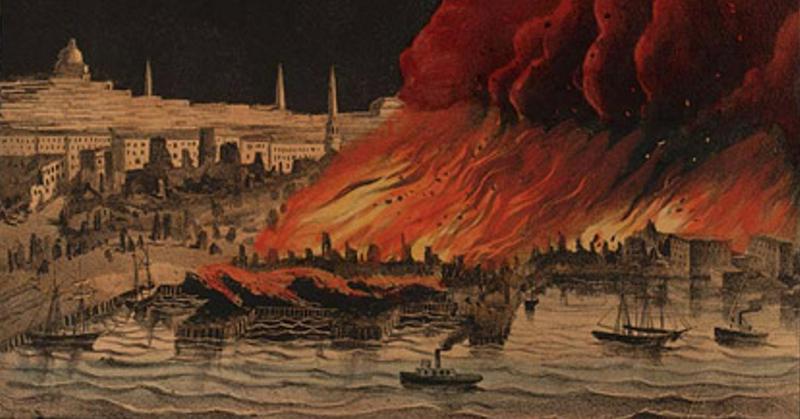The Great Boston Fire Of 1872
By | October 31, 2021

In the early evening of November 9, 1872, a fire broke out on Boston's Summer Street. By the time the fire, which came to be known as the Great Boston Fire of 1872, was extinguished some 12 hours later, hundreds of buildings in a 65-acre area of downtown Boston had been destroyed.
The Great Boston Fire Of 1872
The fire began in a building at the corner of Summer and Kingston Streets that housed dry goods for the nearby retail stores. The bins of fabric were highly flammable, but it was the construction of the building that enabled the fire to spread so fast. The flames shot up the wooden elevator shaft located in the center of the building, and very quickly, every floor of the structure caught fire. The blaze soon leaped from the roof to nearby buildings, and approximately half an hour after it began, the firefighters who arrived on the scene realized it was more than they could handle. By 8:00 P.M., all 21 of the city's fire engines were occupied by the fire.
Despite firefighters' best efforts, the fire grew to encompass a five-block area by midnight. A few hours later, it reached the waterfront, destroying piers, wharves, and boats that were docked there before sweeping through Boston's financial district and throughout the downtown region. When the fire was finally extinguished, 13 people, including two firefighters, were dead. In all, the fire destroyed 776 buildings and caused $1.436 billion in damage in 2019 dollars, making it one of the costliest fires in U.S. history.

What Caused The Great Boston Fire Of 1872?
A perfect storm of influences factored into the ignition and spread of the Great Boston Fire of 1872. At the time, there were few building codes in Boston, and those in place weren't enforced. That meant buildings were often made of flammable materials, built dangerously close together, and taller than the reach of the day's firefighting equipment. Merchandise that was stored in warehouse attics was not considered taxable inventory, so warehouse owners packed as much as possible into the attics and eaves of their buildings, increasing the risk that fires would break out in those hard-to-reach places.
In addition, the streets of Boston, which were quite narrow with tight turns, were difficult for the bulky fire engines to navigate. To make matters worse, the entire northeastern United States was mired in an outbreak of equine flu, leaving fire departments with a lack of horsepower and forcing firefighters to exhaust themselves pulling their equipment through the streets.
The city had the foresight to implement a fire alarm system in 1852, but it worked a little too well. False alarms became a problem, so the boxes were locked and keys were given to only a few trustworthy citizens in each neighborhood. Tragically, many of those key holders were nowhere to be found during the Great Boston Fire of 1872. Thankfully, in the decades that followed, the city (and country) made great improvements in building construction practices, firefighting techniques, and alarm systems.

